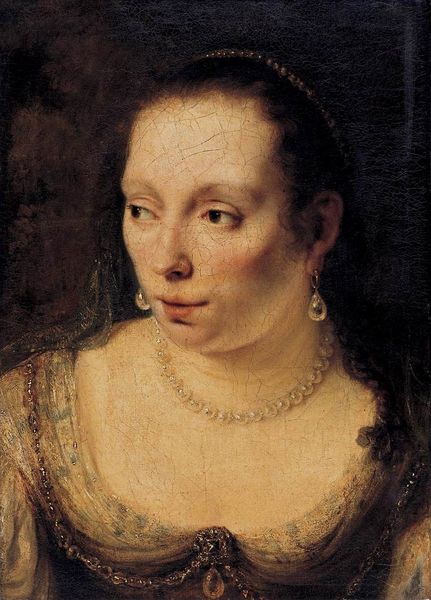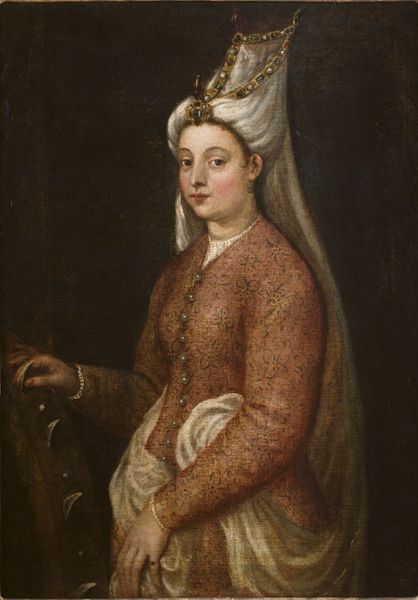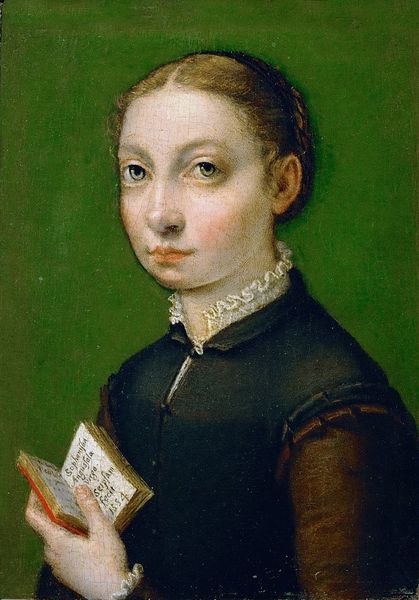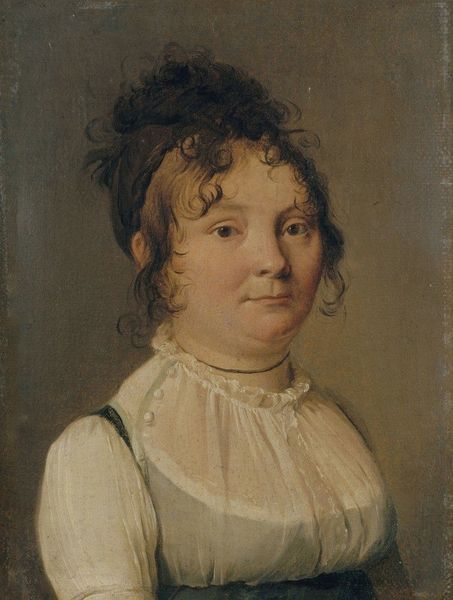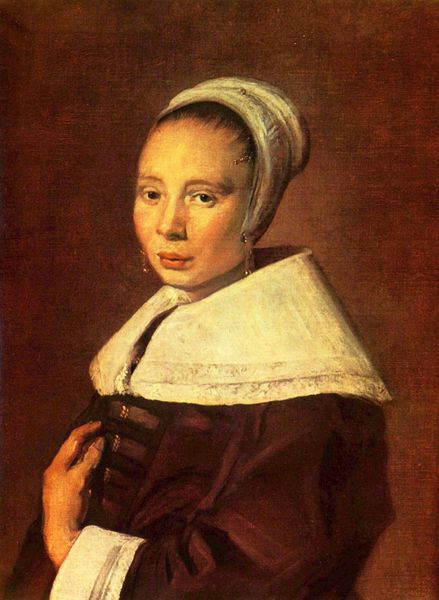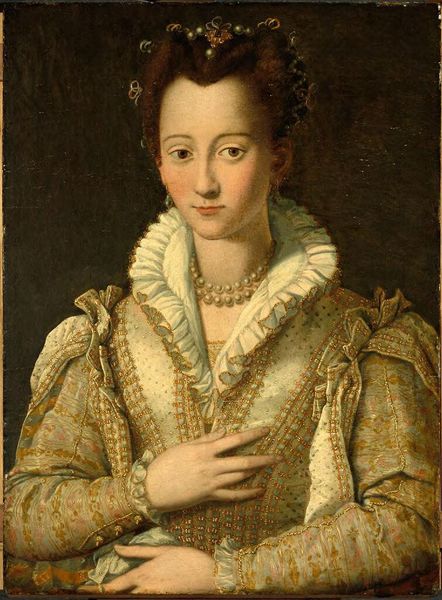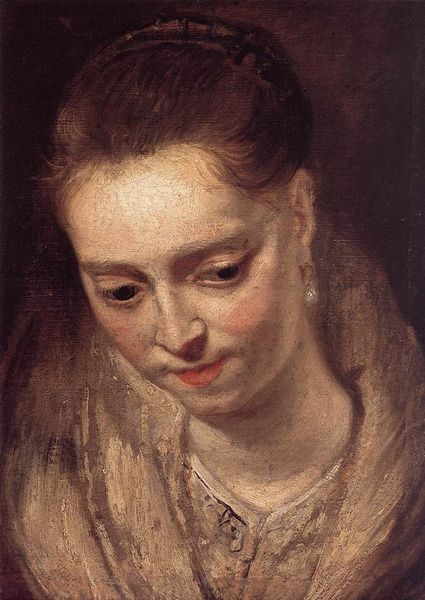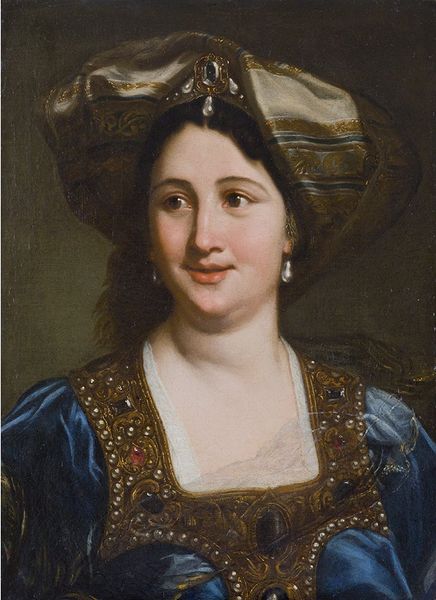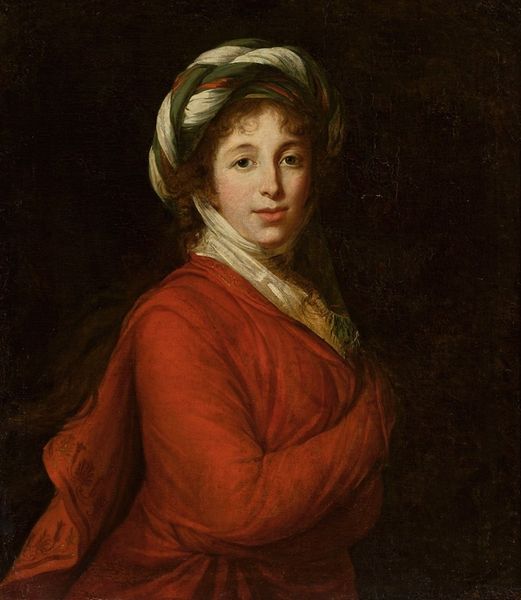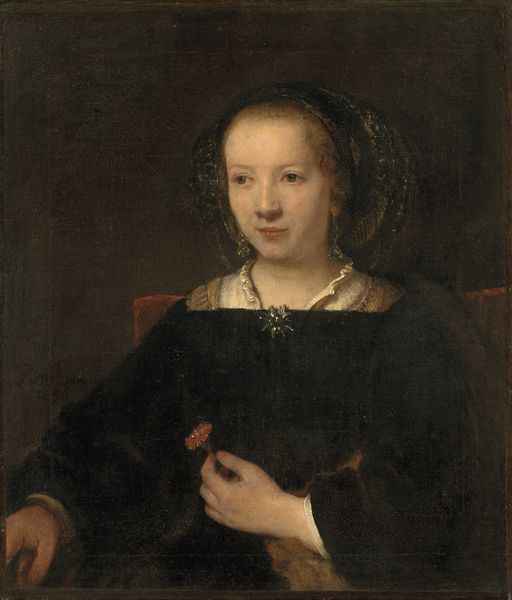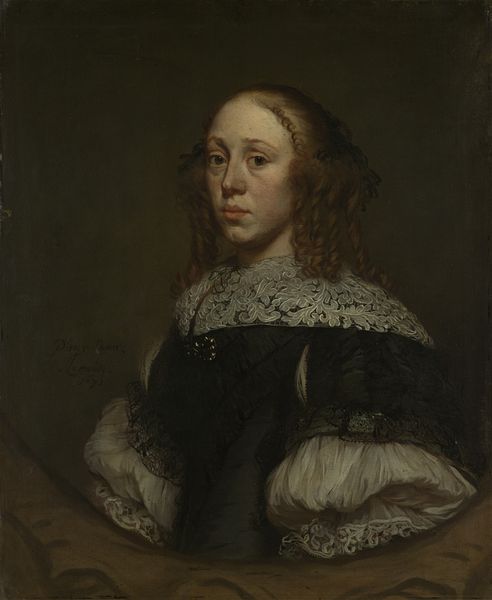
Portrait of a Young Woman 1655
0:00
0:00
rembrandtvanrijn
Montreal Museum of Fine Arts (MMFA), Montreal, Canada
oil-paint
#
portrait
#
baroque
#
dutch-golden-age
#
oil-paint
#
oil painting
Copyright: Public domain
Curator: Looking at this portrait, the first thing that strikes me is the sheer physicality of the paint itself. You can practically feel the layers Rembrandt built up. Editor: It certainly has a weight to it. We’re looking at Rembrandt van Rijn's "Portrait of a Young Woman," created around 1655. It currently resides here at the Montreal Museum of Fine Arts. I see a poised sitter against a very dark, nearly blank background. She wears elegant dark garments,珍珠饰品,and the artist's trademark chiaroscuro casts her face in soft light. What's interesting is the ambiguity—the woman remains largely unknown, raising questions about her identity and Rembrandt's intention. Curator: Right, that use of chiaroscuro. Think about how he achieved this. He wasn't just applying paint; he was manipulating light itself, playing with thick impasto to catch and reflect illumination. And the clothing, almost entirely in shadow – how much work went into the process of creating a textile? The cost? We see glimpses of intricate stitching; someone dedicated serious time to craft this woman’s identity. Editor: Absolutely. Consider where this piece lived, or perhaps even was commissioned from. Rembrandt had experienced fluctuations in popularity at this point in his career. It reflects the culture of patronage and the Dutch Golden Age, doesn't it? A rising merchant class eager to emulate aristocratic portraiture, to embed themselves within social history. The context matters profoundly to how and why an artist makes and continues to make choices, and how society views this artistic effort as it makes it’s way to a museum in another part of the world, some hundreds of years later. Curator: Precisely! How were Rembrandt's paintings traded? Did he have apprentices assisting in the studio production? These details of workshop practice shaped art history. Editor: Agreed, this intimate portrait represents much more than simply paint on a canvas. It speaks volumes about class, status, societal roles and evolving visibility for many groups of people during Rembrandt’s lifetime. I see these portraits more as mirrors, reflecting both the subject and society. Curator: In that case, I encourage the listeners to spend a little time contemplating Rembrandt’s tools as you view this artwork; you might be surprised by the connections you discover between material, method and society. Editor: I would suggest to our listeners; let the mystery remain. What personal narratives does it unlock in you?
Comments
No comments
Be the first to comment and join the conversation on the ultimate creative platform.
